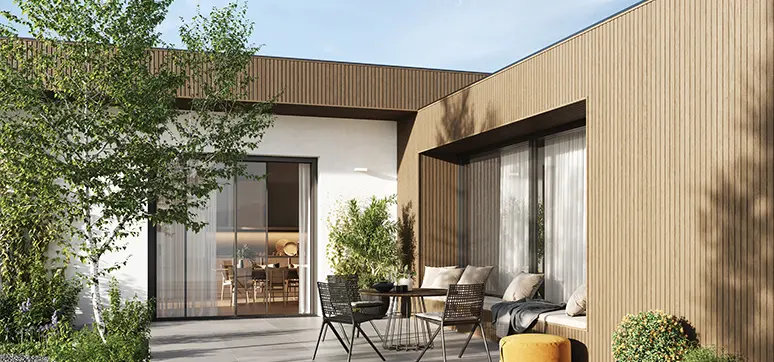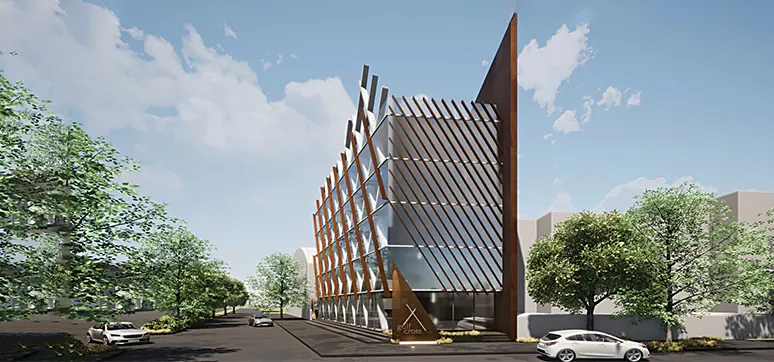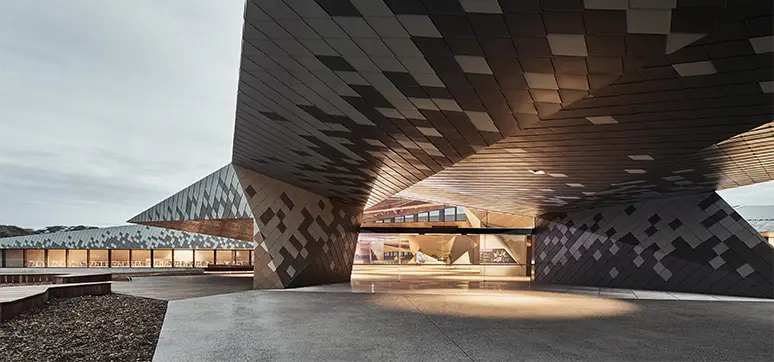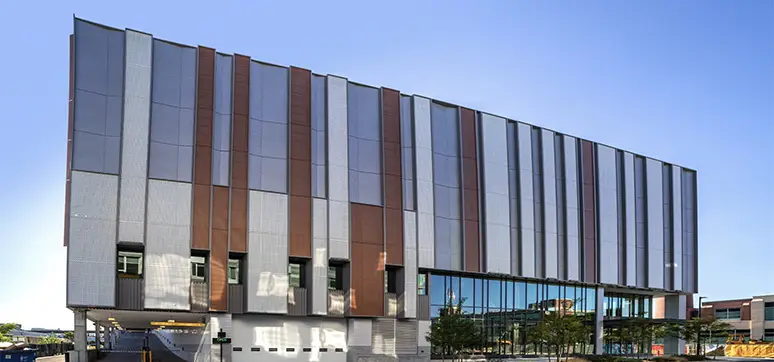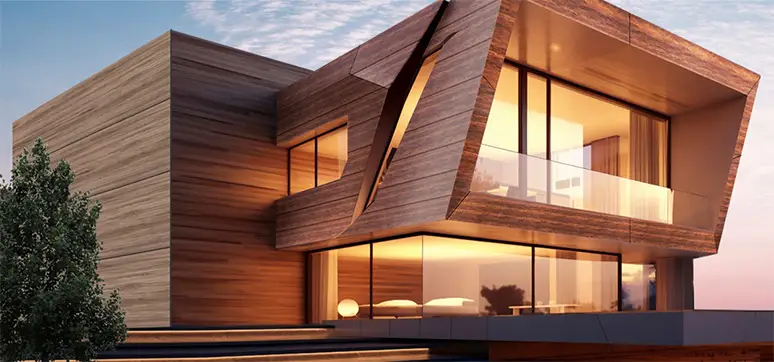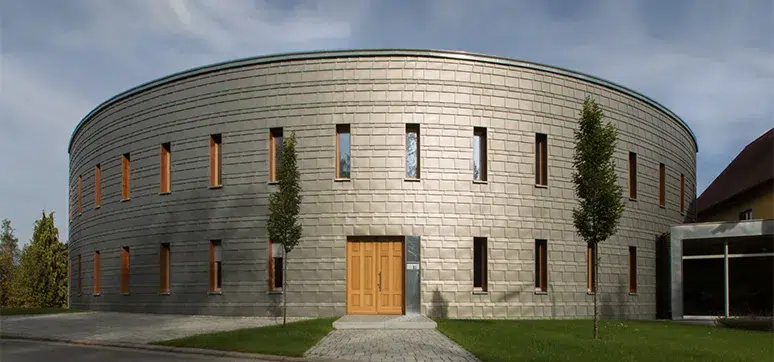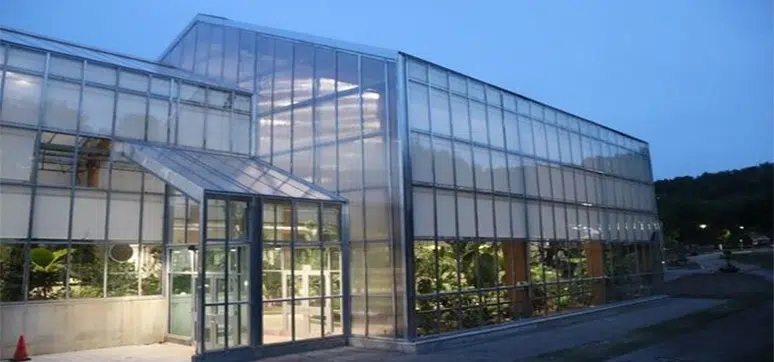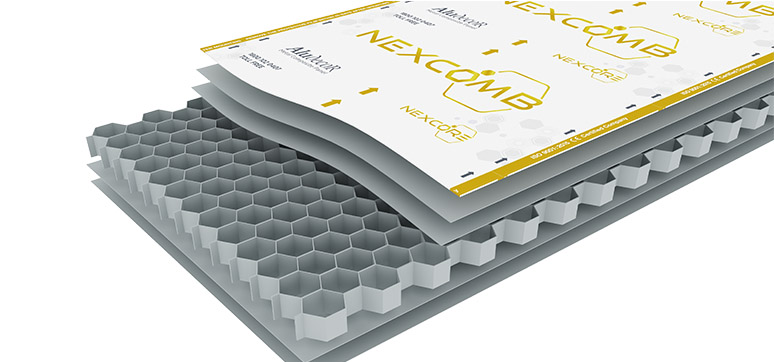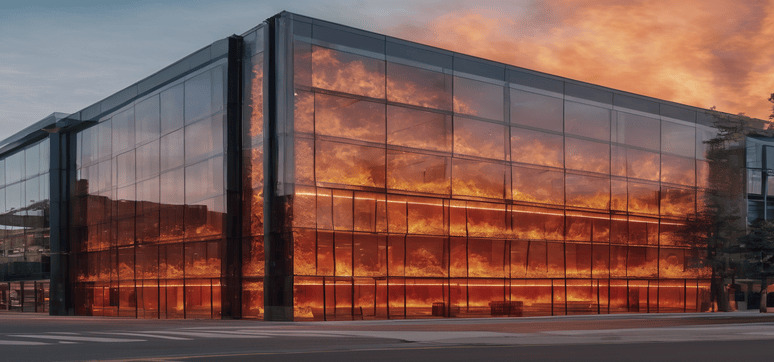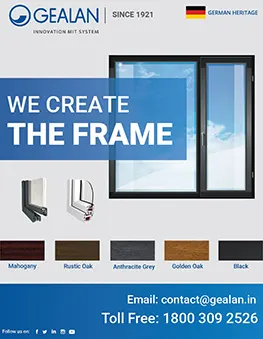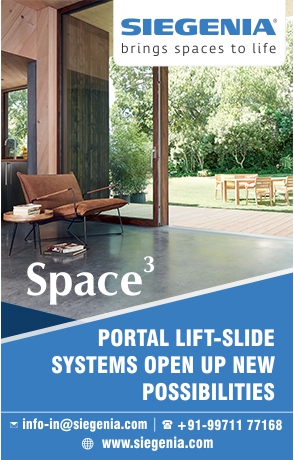Integration of smart technologies & materials within cladding systems
By: Varun Poddar, VOX India
What are the innovative materials for exterior cladding and those in maximum demand?
Fiber Cement: Made from a blend of cement, sand, and cellulose fibers, fiber cement is durable, fire-resistant, and available in various textures and colours. It’s a favored option for contemporary cladding projects.
High-Pressure Laminate (HPL): HPL panels consist of multiple layers of kraft paper infused with phenolic resin and topped with a decorative layer. They provide excellent weather resistance, colour fastness, and design versatility, suitable for diverse architectural styles.
Natural Stone Veneer: Thin-cut natural stone veneers mimic traditional stone cladding but with reduced weight and easier installation. They come in various stone types, textures, and colours, adding a luxurious and timeless touch to buildings.
Polymer Panels: Polymer façade cladding material made of polymer, offering durability, weather resistance, and a range of design options. It’s lighter, easier to install, and requires less maintenance compared to traditional materials like brick or concrete. They can replicate the look of natural wood and are available in various wooden finish colours. It’s resistant to moisture, rotting, and insect damage, making it ideal for exterior use in diverse climates.
Metal Panels: Aluminum, steel, and zinc panels are popular for exterior cladding due to their lightweight nature, durability, and modern aesthetic appeal. They can be customised into different shapes and finishes.
These materials cater to varying preferences, project needs, and environmental concerns, driving a shift towards eco-friendly options that offer both performance and aesthetics.
How does façade cladding help in creating energy-efficient and cost-effective buildings? What are the effects of cladding materials on acoustics, daylighting, heat ingress, and energy conservation?
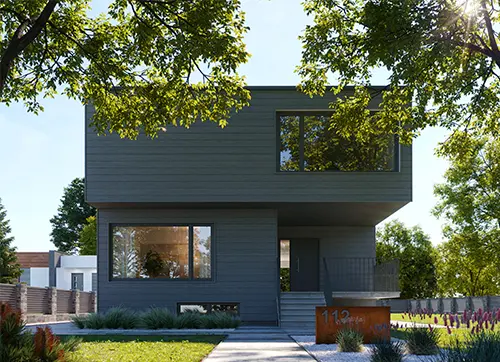
Acoustics: Cladding materials can contribute to sound insulation and absorption, affecting the overall acoustic performance of a building. High-quality cladding materials with good sound insulation properties can help reduce external noise and improve indoor acoustics, creating a more comfortable environment.
Daylighting: Cladding materials can influence the amount of natural light entering a building, which impacts daylighting. Some materials may have properties that allow for better light diffusion or reflection, leading to improved natural lighting conditions indoors. This can reduce the need for artificial lighting during the day, thereby saving energy and costs.
Heat Ingress: The thermal properties of cladding materials play a significant role in managing heat ingress into buildings. Insulated cladding systems can help in reducing heat transfer through walls, thus contributing to energy efficiency by minimising the need for excessive heating or cooling. This leads to lower energy consumption and cost savings over time.
Energy Conservation: Energy-efficient cladding materials contribute to overall energy conservation in buildings. By providing thermal insulation, reducing heat loss or gain, and optimising natural lighting, these materials help create a more sustainable and environmentally friendly building envelope. This, in turn, can lead to reduced energy bills and operational costs.
What are the cladding trends considering materials?
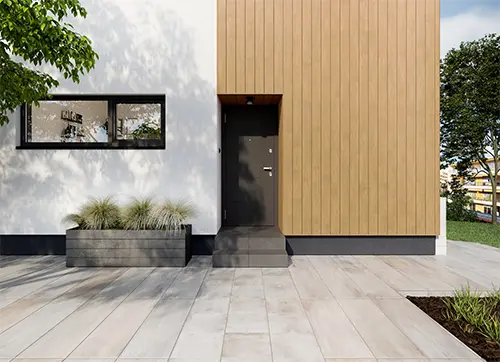
Sustainable Materials: There’s a growing preference for sustainable cladding materials such as recycled wood, reclaimed brick, natural stone, and eco- friendly composites.
Metal Cladding: Aluminum and steel cladding remain popular due to their durability, lightweight nature, and ability to create sleek modern designs.
Fibre Cement: This material is gaining popularity for its fire resistance, low maintenance, and ability to mimic the look of wood or stone. Colours: Uni
Colours:
White, Brown, Graphite, Black Nature Colours: Honey oak, Ash, Beech, Walnut, Golden oak, Oak, Winchester oak.
Designs:
Minimalist Designs: horizontal and vertical designs, especially in modern and contemporary architecture.
Textured Finishes: Cladding with textured finishes like wooden finish, depth, and visual appeal.
Please tell us about the fire safety standards of Cladding materials. What are the other concerns considering the safety and security of the building with respect to the cladding materials?
Ensuring fire safety standards in cladding materials is crucial to protect buildings and their occupants from the rapid spread of fires. Cladding materials are rigorously tested for their fire resistance, which measures how long they can withstand fire exposure without compromising their structure or contributing to fire propagation.
Apart from fire resistance, the production of smoke and toxic gases during a fire is also a significant concern. Cladding materials are assessed for their smoke generation and toxicity levels to minimize risks to occupants.
However, fire safety is just one aspect to consider when it comes to the safety and security of buildings concerning cladding materials. Other important considerations include weather resistance, durability, and maintenance. Cladding materials should be able to withstand various weather conditions and require minimal upkeep for long-term functionality.
Aesthetic and design considerations are also essential as cladding materials contribute significantly to a building’s visual appeal and should align with its overall design aesthetics. Additionally, thermal performance is crucial. Cladding systems not only enhance fire safety but also protect the interior from heat loss and promote good air circulation to prevent mold growth.
Moreover, sustainability plays a vital role in choosing cladding materials. Opting for environmentally friendly options that minimise the use of natural resources, do not require painting or extensive maintenance, and are recyclable can significantly reduce a building’s ecological footprint.
What are the types of cladding materials and designs you wish to see/use in future, say 25 years from now?
The integration of smart technologies within cladding systems could become more prevalent. This might include self-cleaning surfaces, energy-generating materials (such as photovoltaic cladding), or even interactive cladding panels that respond to environmental conditions.
Cladding systems capable of adapting to changing weather conditions or user preferences may become more popular. This could involve adjustable panels for shading or insulation, dynamic colour-changing surfaces, or modular designs that allow for easy reconfiguration.
Furthermore, cladding systems capable of autonomously regulating temperature, humidity, or air quality within buildings could be developed, contributing to improved indoor comfort and energy efficiency.
Additionally, cladding materials or surfaces that integrate augmented reality (AR) features for informational or interactive purposes could be explored, offering new possibilities for user engagement and building functionality.
Top Stories

How Enabling Information Transparency Can Improve the Value Recovery of Façades
By: Abdul | June 19, 2024

Web Calling! Kuraray X SentaryGlas®
By: Abdul | June 14, 2024

The Critical Role of Fire-Safe Cladding Materials in Fire-Safe Building Façade
By: Abdul | June 13, 2024

BIM’s Transformative Impact and Future Trends in Architecture
By: Abdul | June 11, 2024

Design Approach for Façades & Fenestrations
By: Abdul | June 6, 2024

